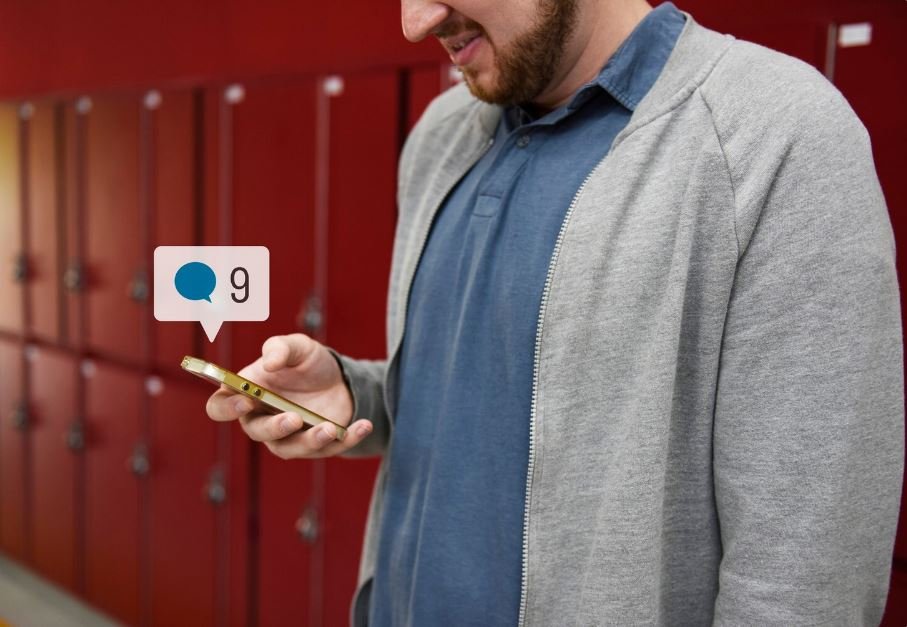
Swift, widely shared, and incredibly damaging, a single tweet has the power to upend an athlete’s career like a sudden storm over calm waters. An emotional outburst can turn into a financial and reputational disaster. In sports, where appearance is just as important as performance, 280 characters could be interpreted as an inadvertent confession, a provocation, or worse, a liability for one’s career.
Social media has made it harder to distinguish between a brand and a player in recent years. These days, teams assess personalities just as thoroughly as they do data. The repercussions of a tweet that goes too far in terms of language, timing, or tone can be especially dire. It’s not just about what is said; it’s also about how and when it’s interpreted. Credibility can be quickly damaged by a poorly timed grievance regarding playing time or a thoughtless remark about teammates.
| Aspect | Details |
|---|---|
| Primary Risk | Financial loss due to tweets that damage reputation or breach contracts |
| Typical Loss | Millions in salary, sponsorships, or endorsements |
| Notable Case | Laremy Tunsil’s leaked Twitter post cost him an estimated $10 million |
| Corporate Impact | Kylie Jenner’s tweet erased $1.3 billion in Snapchat’s value |
| Legal Impact | Elon Musk paid $20 million in SEC fines for one tweet |
| Cultural Example | Geno Smith’s draft stock slipped amid social media criticism |
| Typical Earning Per Tweet | $1,000–$140,000 depending on athlete influence |
| Platform Revenue | Roughly $1–$5 per million tweet views |
| Underlying Issue | Lack of discretion, poor timing, impulsive posting |
The warning tales are many and painfully detailed. Shortly before the 2016 draft, a video of Laremy Tunsil smoking a bong appeared on Twitter. Tunsil was once predicted to be selected in the top five of the NFL draft. His ranking fell to 13th overall. For a young athlete on the verge of success, that slip cost him almost $10 million in guaranteed money in just a few minutes.
In a similar vein, Elon Musk lost his chairmanship for a while and was fined $20 million for his now-famous tweet about taking Tesla private. The $1.3 billion in market value of Snapchat was immediately erased by Kylie Jenner’s innocuous remark regarding its redesign. Their examples demonstrate how intent is amplified and consequences are multiplied on the digital stage. There is hardly any room for error for athletes, who frequently live under intense scrutiny.
On the other hand, some people have made social media a very useful tool. LeBron James, whose one sponsored tweet is worth about $140,000, is the epitome of the disciplined extreme: an athlete who makes strategic use of his platform by balancing precision and authenticity. His online voice has evolved into a well-balanced extension of his public persona, demonstrating the remarkable efficacy of discipline in fostering trust on the internet.
Others find it more difficult to learn self-control. According to reports, Geno Smith talked to team executives less during his pre-draft interviews and instead spent more time on his phone. Although not scandalous, the impression of detachment raised questions about leadership and focus. In the end, he joined the league, but not as the first-round selection that many had anticipated. Millions of dollars in lost initial salary and endorsements could have resulted from that small but important disparity.
Ironically, social media was first hailed as an equalizer, a platform that allowed athletes to communicate with fans directly without the intermediary of public relations or journalists. It eventually turned into a double-edged sword, though. Exposure comes from the same immediacy that empowers. If freedom is misused, it can quickly destroy voices that are amplified.
Sponsors and teams have become especially wary. The majority now clearly state that reputation equals income and contain provisions addressing online behavior. Termination may be justified by a racist joke, an offensive meme, or a politically charged statement that violates “morality clauses.” Reputation is vital to businesses that spend millions to work with athletes; it is not an option.
The disparities in risk economics are startling. The ad-sharing model on Twitter pays creators between $1 and $5 for every million views, which is absurdly little when you consider the price of a single offensive post. Even with confirmed monetization, the possible losses from a viral tweet greatly exceed the possible profits. Years of brand equity could be destroyed in a single evening by one poorly thought-out joke.
Psychology is the deeper problem. Social media can provide athletes with immediate validation during emotional times, such as following defeats, criticism, or disputes. That instinct, which is motivated by pride or frustration, is dangerous but understandable. Deleting a message doesn’t take away its impact once it’s live. Retweets, comment threads, and screenshots capture the original moment and turn a slip-up into a lasting legacy.
Companies have made an effort to react early. In order to teach players to wait before posting, many leagues now mandate digital behavior workshops. Although they are not infallible, these sessions are especially helpful. The instantaneity of social media feeds the same instincts—reaction, speed, and emotion—that make athletes competitive. It takes practice, not just policy, to translate that into restraint.
Additionally, there is a nuance of generation. Younger players frequently view tweeting as a natural form of expression rather than a risk because they have grown up with constant online visibility. However, sponsors and executives who see social media as a component of the corporate ecosystem have quite different perspectives. Because of the misunderstandings caused by this cultural divide, older players’ mentoring has become more and more important.
Serena Williams and Chris Paul are two examples of seasoned athletes who have strategically mentored younger athletes to see social media as tools rather than toys. Their examples are especially creative, demonstrating the harmonious coexistence of professionalism and presence. They have shown that influence, when handled well, can be very effective in influencing both public opinion and professional outcomes by leading with poise and purpose.
There are many cautionary tales, even outside of sports. Anthony Weiner’s political aspirations were ruined by his scandal, which was brought on by explicit tweets. Careless comments have cost corporate executives their jobs. Every instance highlights a straightforward reality: digital traces are incredibly resilient, and restoring trust takes years of work.
Nevertheless, there is hope in these lessons. More and more athletes are opting for substance over reaction and mindfulness over impulse. They are supporting communities, promoting causes, and creating enduring brands with a foundation in integrity through their online platforms. The cultural environment of professional sports is significantly improving as a result of this change, albeit slowly.
The lesson for young athletes starting their professional careers is very clear: reputations are developed through regular interactions, particularly online ones, rather than press conferences. Millions can be inspired or alienated by a tweet. Reflection, self-control, and respect make a difference.
